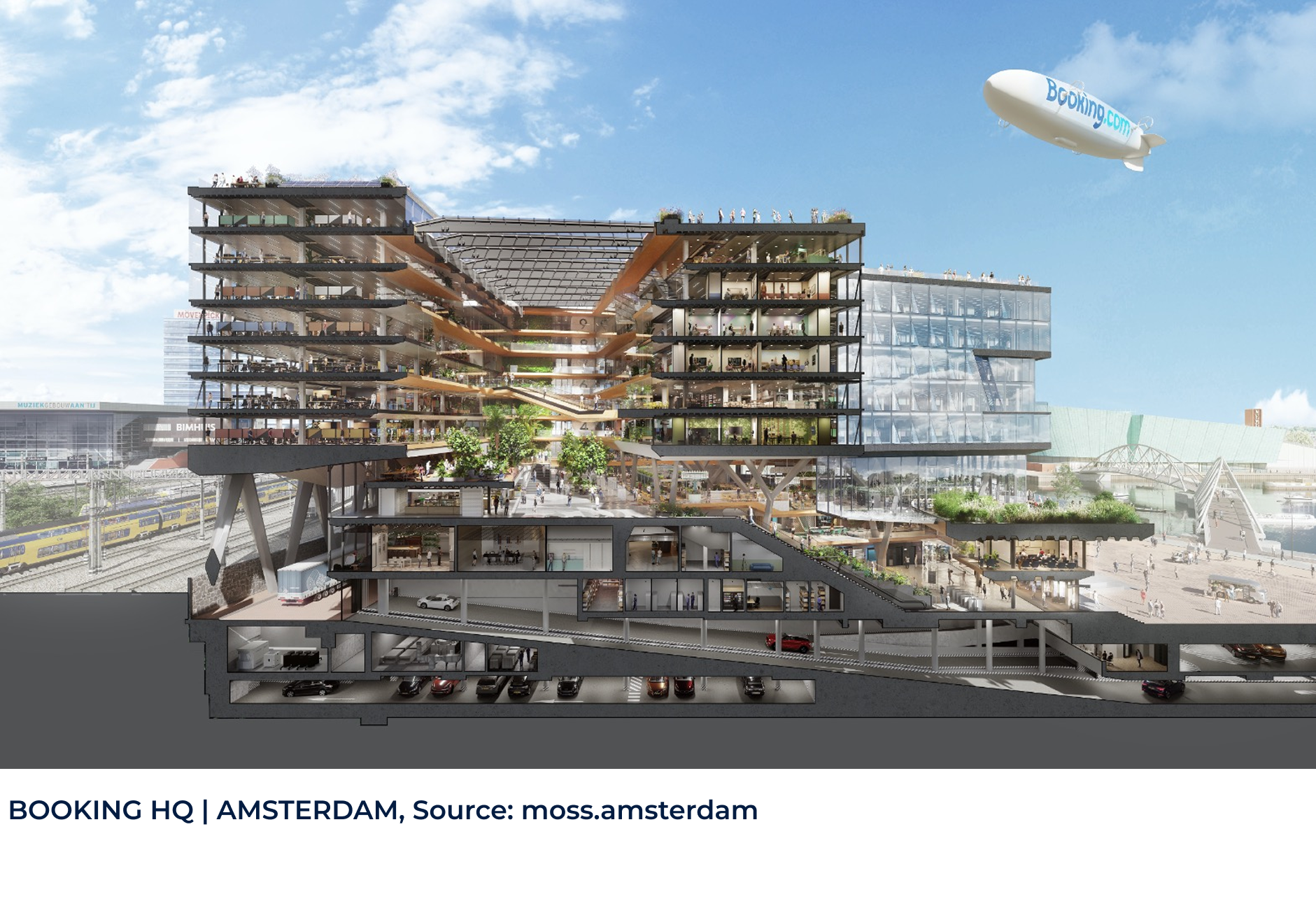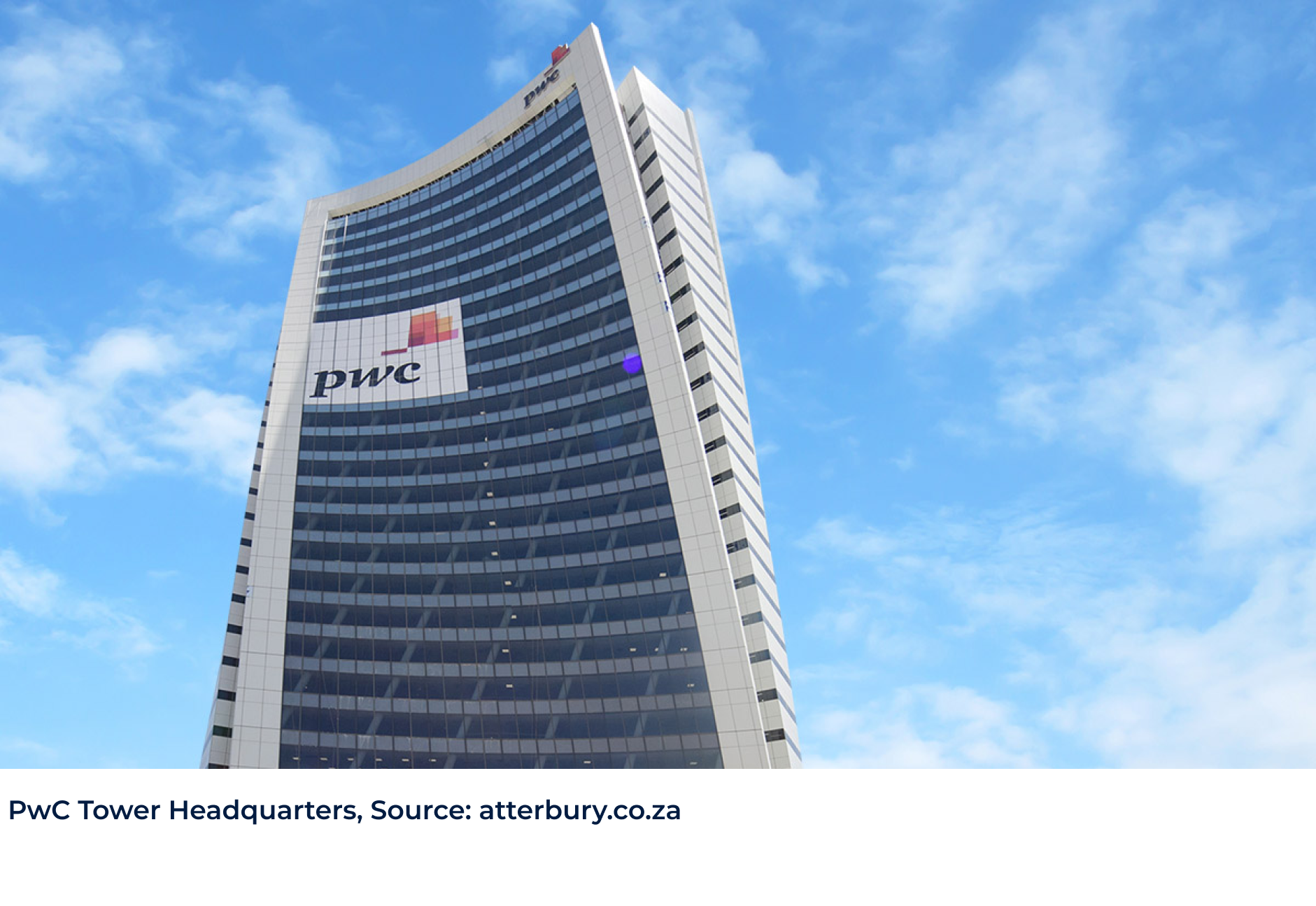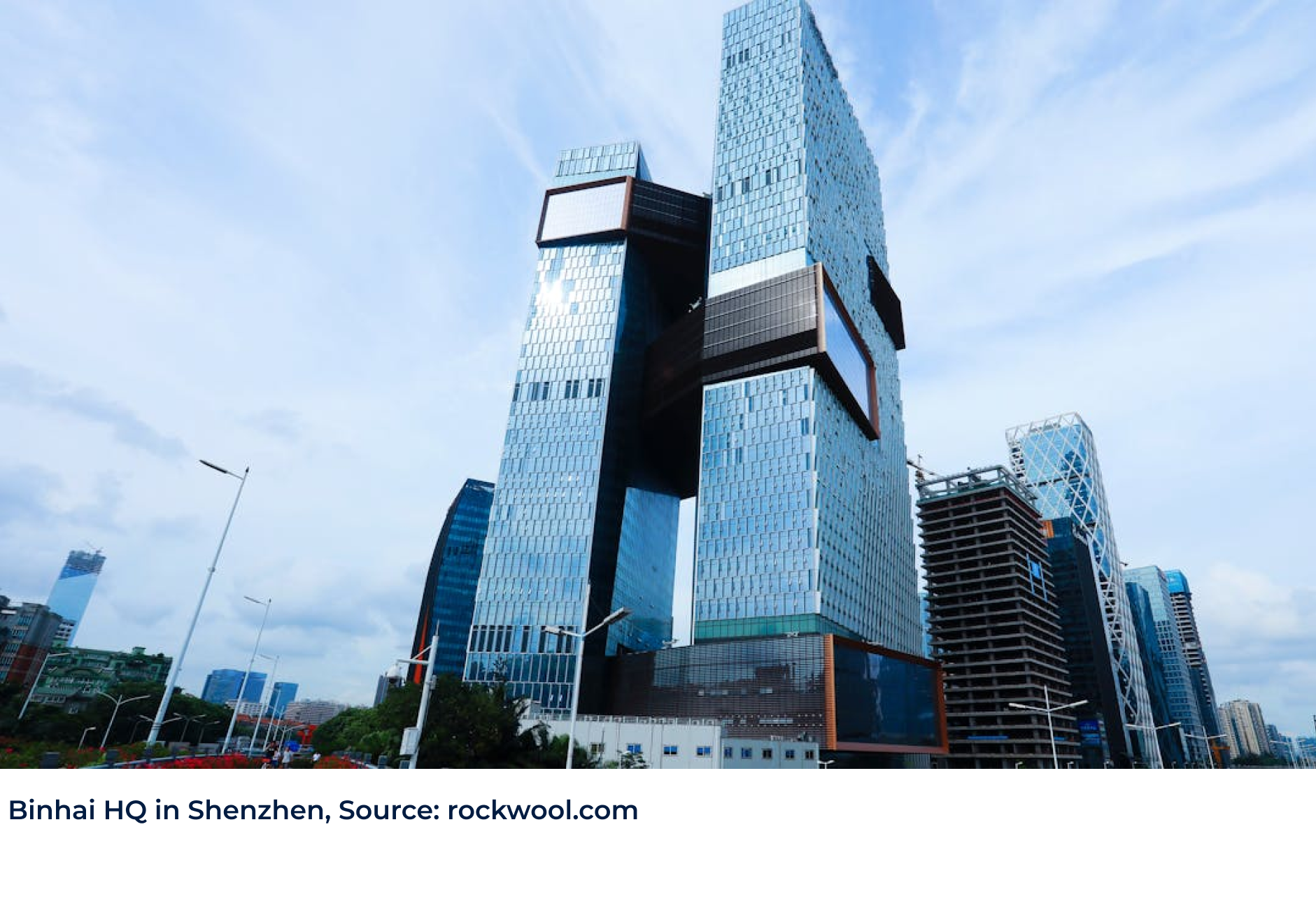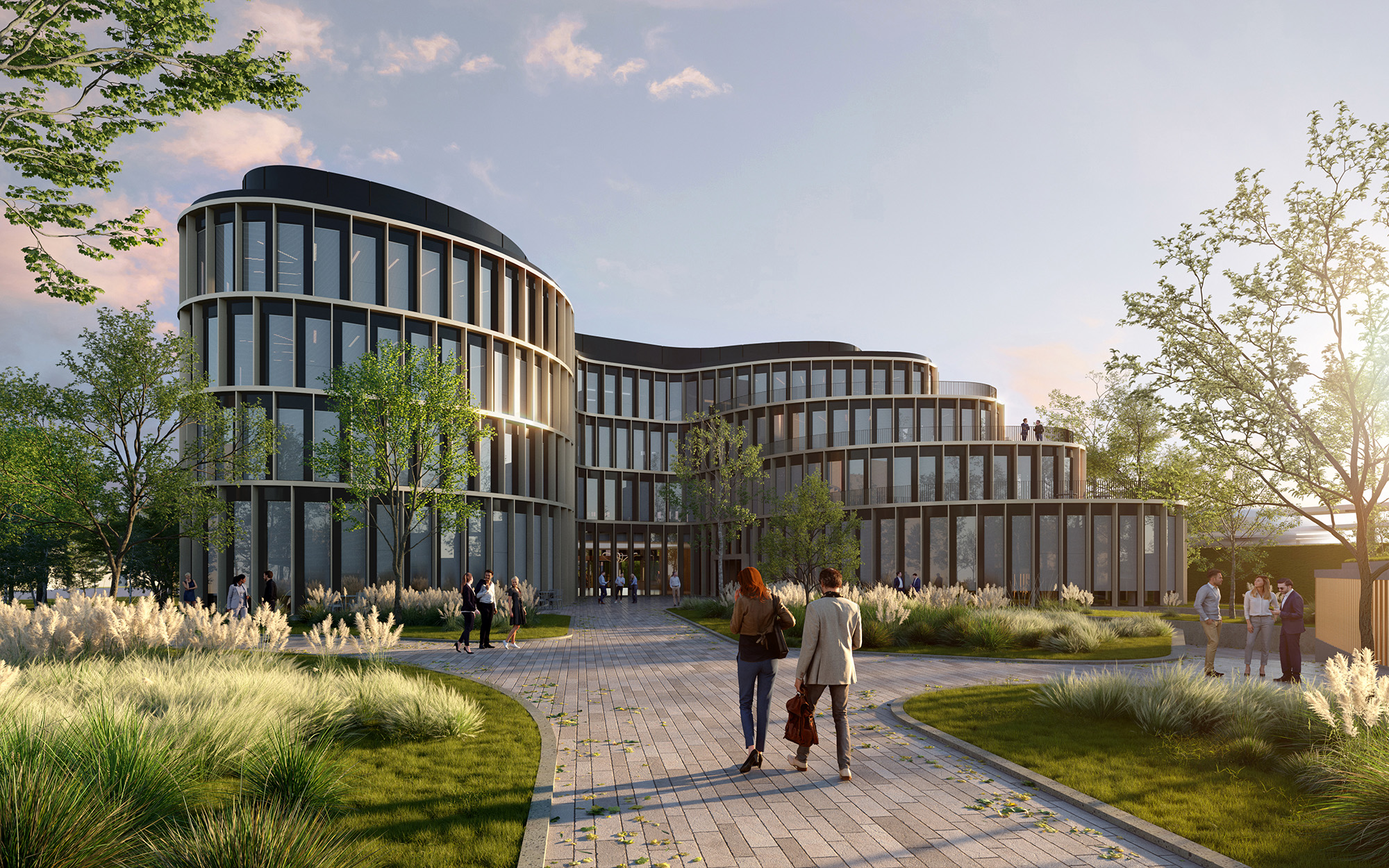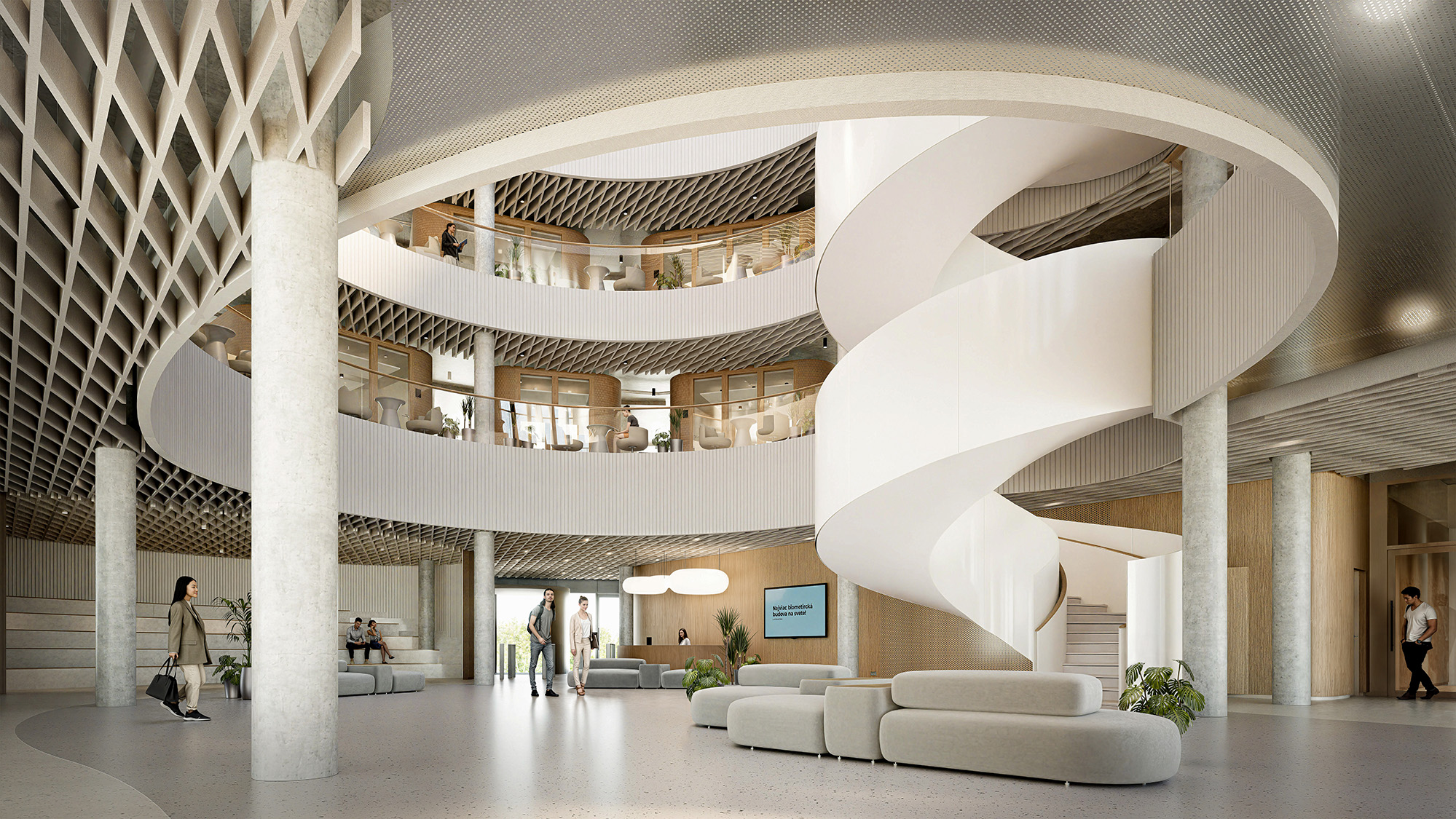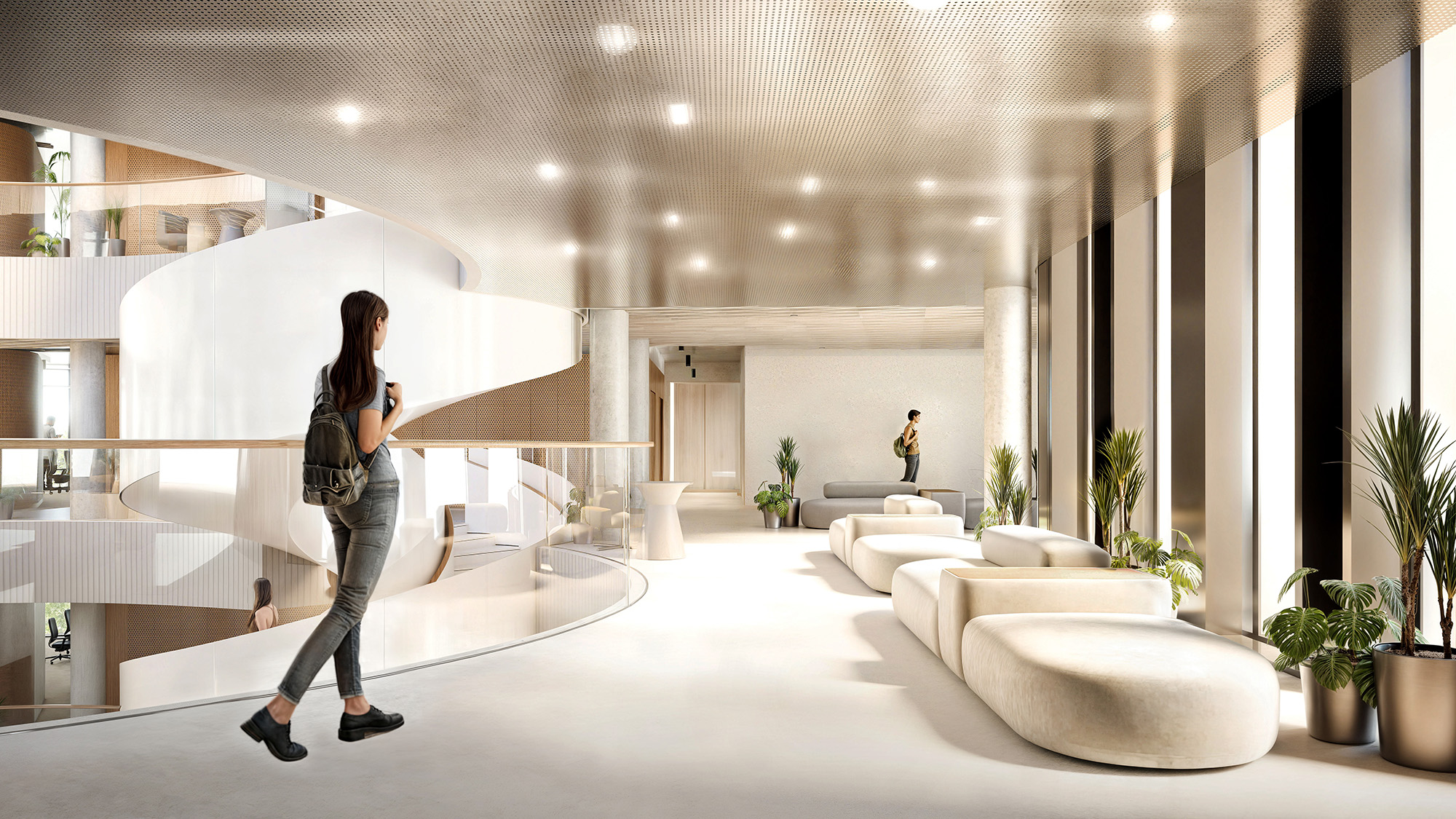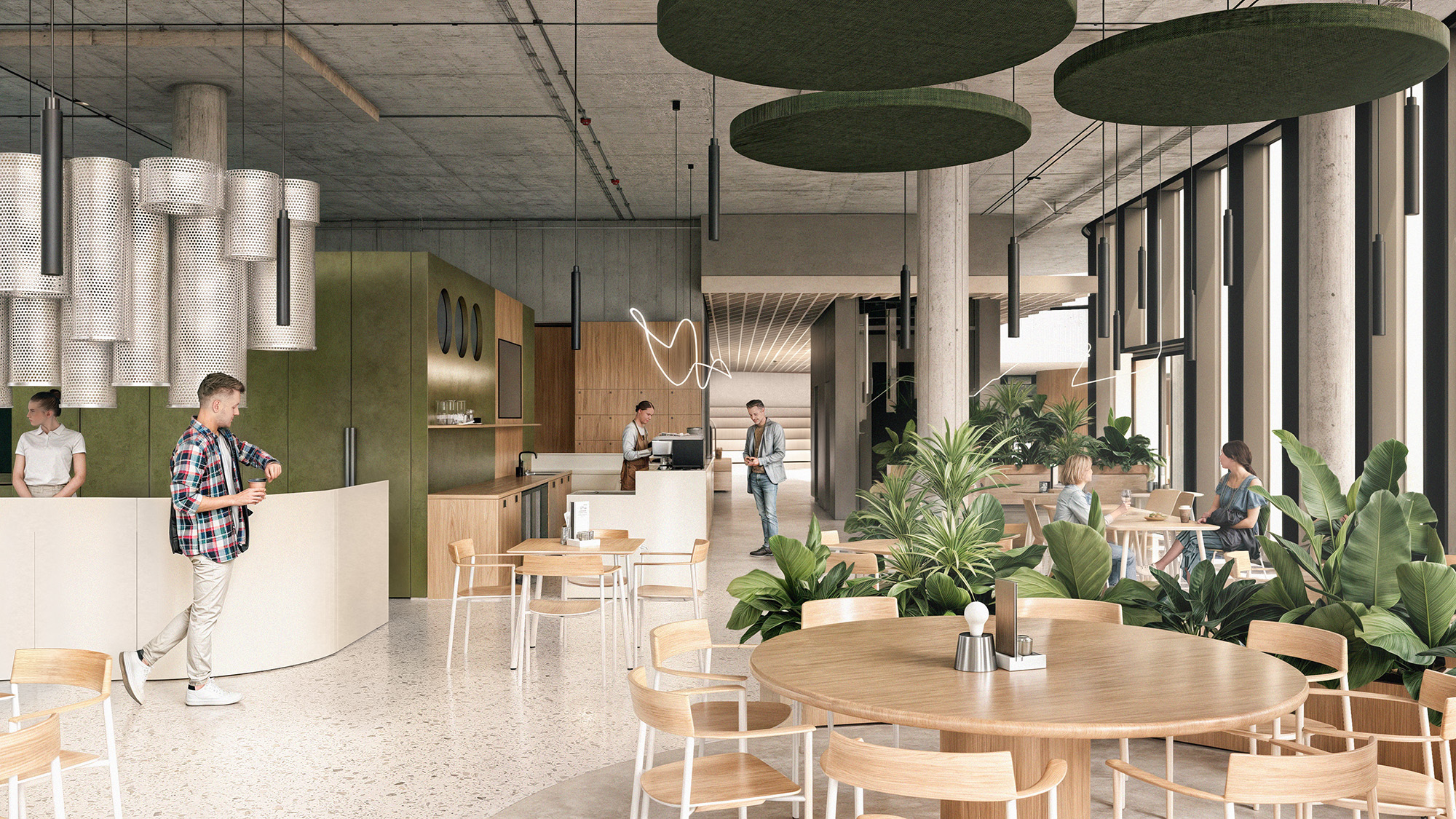The HQ Effect: Why Next-Gen Headquarters Seed Urban Ecosystems
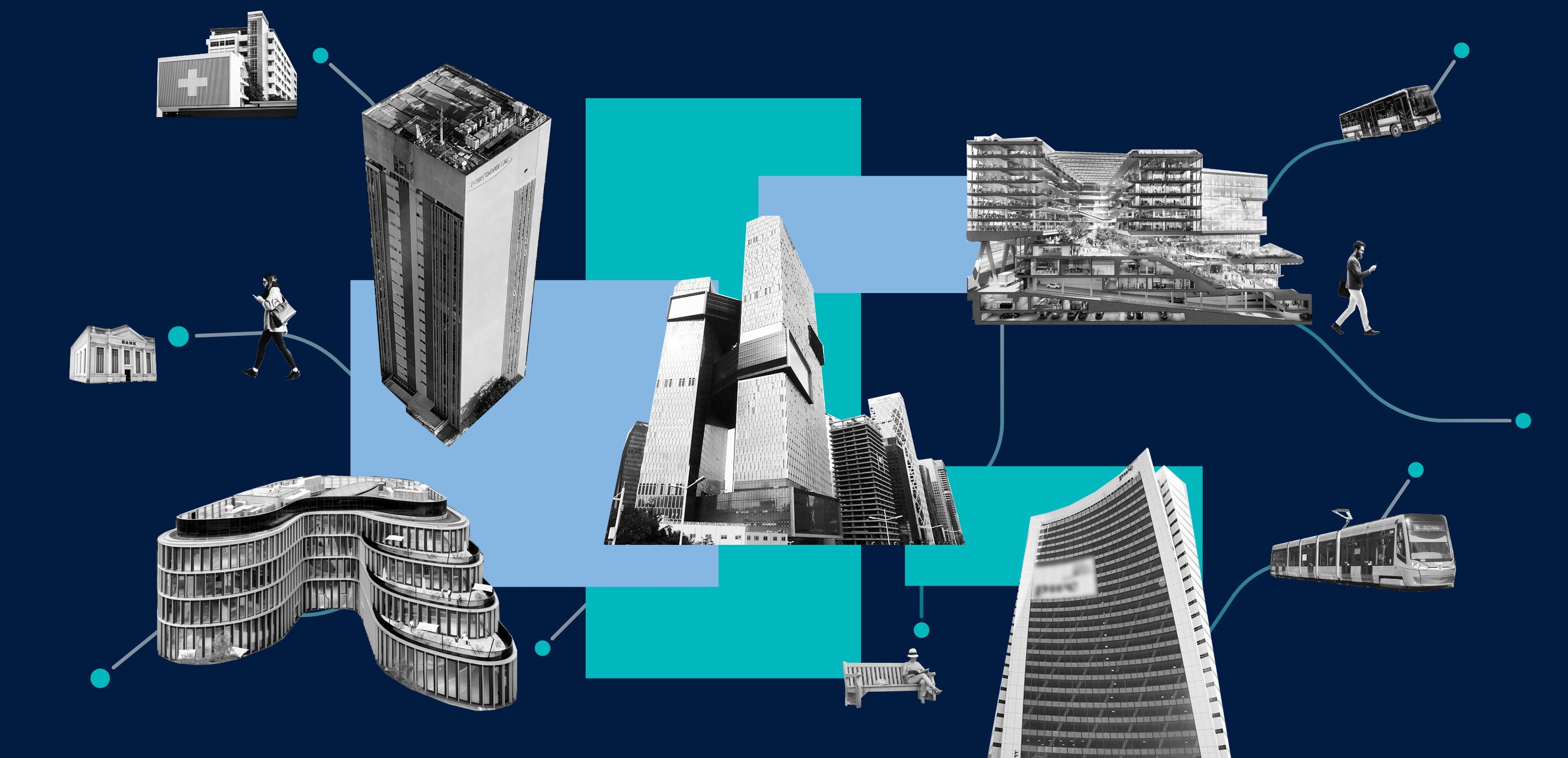
Urban ecosystems aren’t born from branding decks or mural-wrapped office parks. Globally, the most effective headquarters serve as interfaces for transit, identity and urban life. If a building can behave like good urban code, the city evolves and everyone benefits.
Headquarters used to behave like islands. They were gated, inward, and off the map of city life. That era is ending. The next generation of HQs is not a citadel but an urban engine stitched into transit, street culture, and public space, designed to catalyze jobs and ideas far beyond their walls. The question is no longer whether a company can build an impressive building, but whether that building can behave like good urban software.
“The HQ today doesn’t just chase talent; it changes how the city around it works.”
In cities from Amsterdam to Mexico to Bratislava, they’ve become something more. They’re laboratories for new ways of working, living, and moving. The HQ today doesn’t just chase talent; it changes how the city around it works.
HQs now act as neighborhoods—not in a metaphorical sense, but as real civic infrastructure that are open, accessible and interoperable. Think governance, identity, safety, and sustainability as APIs a city can call. Done right, this approach produces density with dignity, bringing forth more ideas per square meter and more life per hour.
How an HQ can become an urban nucleus
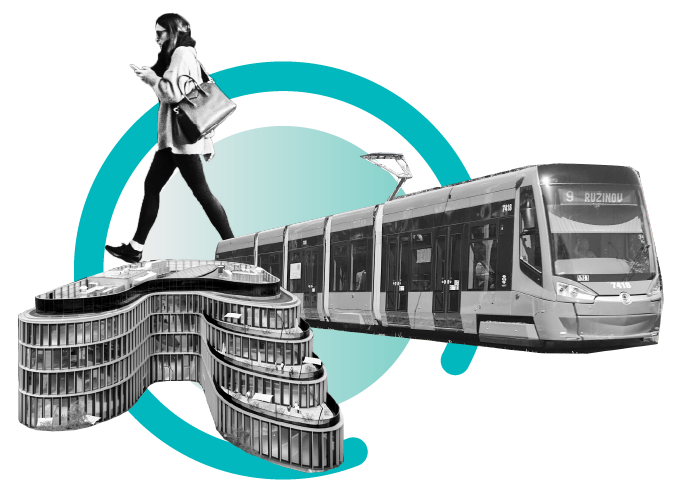
Procurement and pilot projects create a local learning market. When a building runs advanced systems, whether for energy, mobility, or security, it doubles as a real-world lab. Local SMEs, integrators, and universities can test, validate, and refine their solutions directly on site.
Recurring events matter more than one-off fanfare. Auditoriums and labs that host meetups, standards workshops, and civic demos help stitch industry to the public realm. The spillovers show up as firm formation and patenting in adjacent sectors over time.
Transit proximity compounds each effect. Being next to a rail stop or rapid bus link raises effective labor markets and customer access. European data ties faster access to major centers with higher regional growth, which is why station-area upgrades are high-return complements.
What it Looks Like on The Ground
In the most successful cities, corporate headquarters now act like operating systems. They concentrate talent, pull in suppliers, spin out startups, and set a tempo for a multitude of services. The result is a local ecosystem that behaves more like a district than a building.
Booking.com’s HQ in Amsterdam sits beside Centraal Station in Oosterdokseiland, bringing thousands of staff under one roof. A porous base and continuous waterfront paths keep the ground plane public, so the building reads as part of the quay rather than a sealed object. It functions as the keystone of the inner-city redevelopment.
PwC’s South African HQ in Johannesburg was the first high-rise in Waterfall City, a new district anchored by the Mall of Africa and an urban park. The twisting 26-story tower acted as a skyline signal and unlocked follow-on projects. More office space, new residential blocks, and everyday retail tightened the street network and gave the area a real center after its completion.
“Companies do better when their buildings behave like part of a neighborhood assembly.”
Tencent’s Binhai HQ in Shenzhen is a vertical campus in Nanshan’s high-tech park—two towers linked by skybridges, an open base with retail and public routes, and direct connections to the metro and bus. It raised sustainability and workplace standards and helped push the area from an edge district to a credible global tech address.
Companies do better when their buildings behave like part of a neighborhood assembly. That demands a different set of choices by both developers and mayors—zoning that rewards mixed use, transit supremacy over private parking, and governance that treats ground floors as public interfaces rather than lobbies.
Latin America Offers a Different Lens
These cities didn’t just copy Silicon Valley. They took parts that worked well within their own localities and remixed them. They built platforms, universities plugged in, and companies found it cheaper and faster to work in public view.
Medellín, Colombia took on the role of a municipal broker. Ruta N behaves like an operating company for innovation. It scouts firms, matches them with talent and labs, and clears the social path. In 2022 alone, it helped generate 3,316 science, technology, and innovation jobs, land 55 tech companies, and attract COP $9.902 billion in capital despite political turnover. The point isn’t a single flagship building, it’s a city-run switchboard that keeps the ecosystem powered.
Recife, Brazil forged a public–private partnership. Porto Digital is an innovation district that turned a historic waterfront into a tech-and-creative engine. In 2024 it closed the year with 21,551 jobs and R$6.2 billion in company revenue, up 14% year over year—evidence that steady governance plus street-level programming can scale outside the megacities.
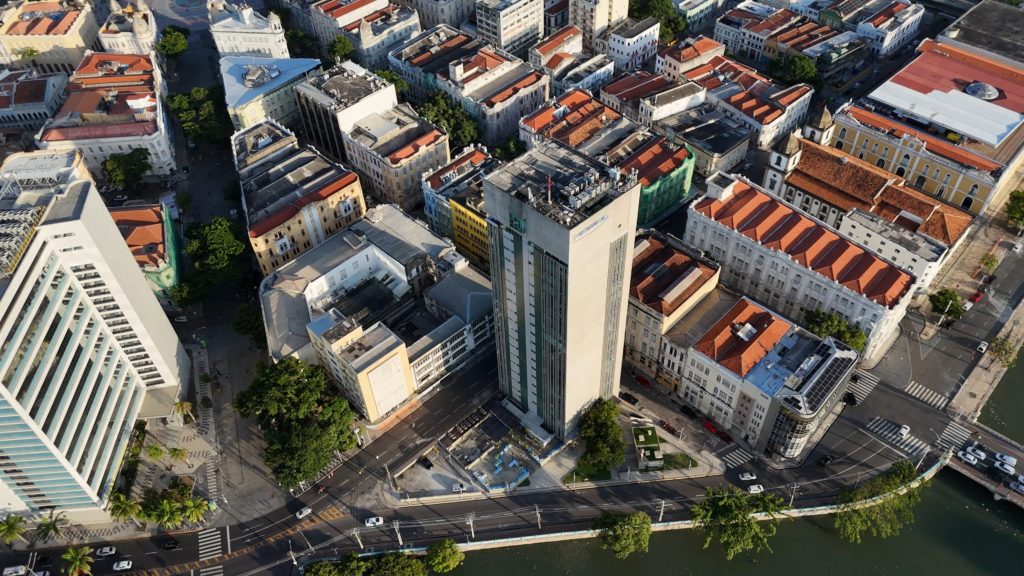
Buenos Aires, Argentina created a district with a jobs ledger. The Distrito Tecnológico concentrated companies in Parque Patricios and Nueva Pompeya and then stayed boring on purpose: tax incentives, clear land-use rules, and a drumbeat of small improvements. Fifteen years in, the district reports over 400 firms and more than 23,000 jobs, many of which are export-earning and offer higher wages. That’s an urban productivity play, not a branding exercise.
In upgrading a legacy factory belt, Mexico City made its mark. Vallejo-i takes an old industrial zone in Azcapotzalco and wires it for advanced manufacturing and R&D. The city co-invested in the CDIT Vallejo-i (data center, AI and Industry 4.0 labs, materials/prototyping) and built the infrastructure with various stakeholders so that firms can test, hire, and scale without leaving the district. It’s an explicit bet on shorter distances—between plant and lab, between classroom and production line.
Latin America’s playbook is pragmatic—concentrate production, shorten time-to-build and time-to-talent, and tie corporate space to the street so the neighborhood benefits even when firms churn. The common thread is governance: you can program, clear incentives, shared labs, and transit-first sites, so companies don’t just occupy a block but upgrade it.
Leadership Helps Set the Tone
Mayors write the civic brief. “Boston is the home for big ideas that can change the world,” Mayor Michelle Wu said while expanding the city’s life sciences pipeline. In London, Mayor Sadiq Khan called his city “a test-bed for civic innovation.” In Bratislava, Matúš Vallo’s mandate is simpler and just as technical: “My wish is that people feel comfortable in high-quality public spaces like in other European cities.”
These aren’t booster quotes. They’re operating instructions for innovation neighborhoods, benefiting the public first with private growth as the outcome.
Mayors and urban planners program the codes that decide how these places work, where people take priority over cars, which projects move first, what data can be shared, and how public benefits are guaranteed. When those rules are clear, permits move faster, more people arrive by rail, ground floors stay active, evenings and weekends fill up, and safety improves without security theater.
Those are the signals companies read, and why the best HQs plug into the city instead of walling it off.
So what does a well-designed urban ecosystem look like?
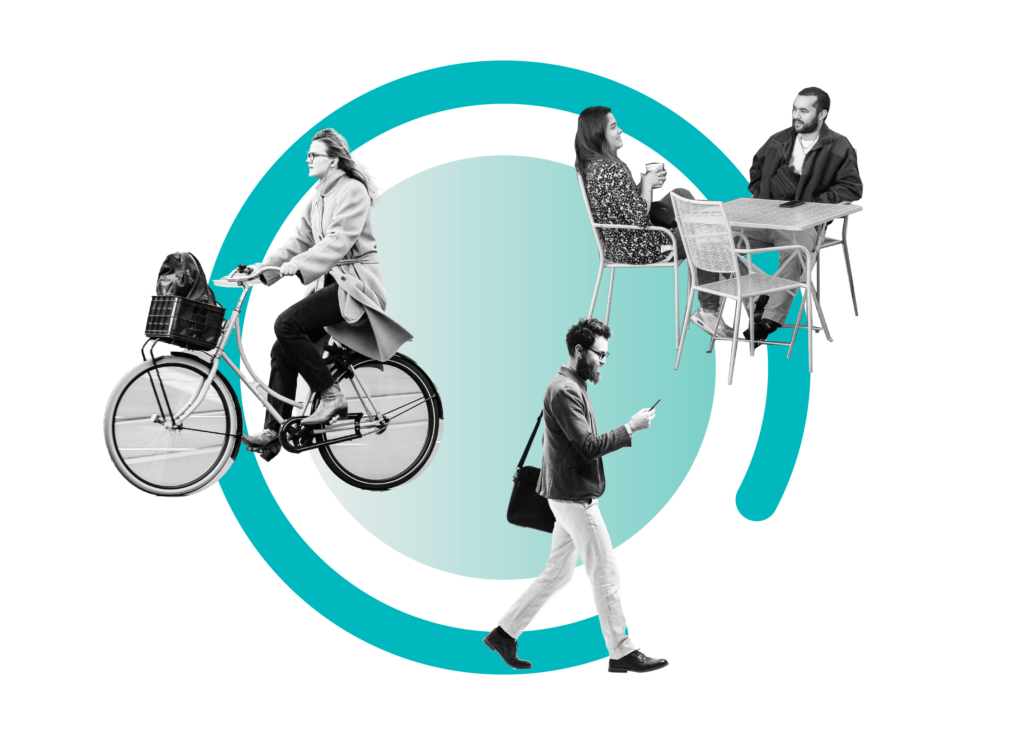
Connected access. Frequent transit to and through the site, safe cycling and walking, and easy wayfinding. Density raises productivity and invention, but only if people can reach each other easily.
Mixed civic ground floors. Cafés, clinics, libraries, or training rooms at street level so that a private campus also serves public life. Innovation districts work because they blend uses rather than isolate them.
University partnerships by design. Shared labs, co-advised projects, and IP transfer programs within easy travel distance raise local firm entry and innovation. The gains are strongest when research intensity and skills are high and close.
Inclusion and affordability tools. Density brings wage gains and variety but can raise rents and widen skill gaps. Pair growth with rental supply, skills training, and transit discounts to keep access broad.
The Hard Edges
There are risks. Displacement is real if housing policy lags. South Lake Union’s tech boom was closely tied to rent pressure and affordability gaps across Seattle’s core. Smart-district features can also drift into surveillance when data rules are vague. And while density reliably boosts access and productivity, it also magnifies planning errors especially where housing and governance lag.
An innovation district becomes a platitude when it’s just office space wrapped in murals. The fixes are known: inclusionary housing tied to transit investments, street-level leases for community uses, transparent data practices, and third-party testing for any system that watches or decides.
We should also accept that not every cluster endures. Lagos offers a cautionary note. In 2024, Microsoft shut its Lagos Africa Development Center even as it doubled down on engineering elsewhere in Africa. Even with brand-name tenants and serious talent, ecosystems wobble without infrastructure, policy follow-through, and tight coupling to universities. Anchors come and go. Neighborhoods only last if they’re designed to survive their tenants.
Why biometrics matter in open, urban spaces
Opening a workplace to city life changes the threat model. The right answer isn’t a bigger moat. It’s identity that works in the background, which is fast, privacy-preserving, and flexible across roles and spaces.
Two realities make that viable now. First, independent evaluations of face recognition are more transparent and frequent than ever, letting operators stress test performance across demographics and environments. Second, standards for presentation attack detection and template protection have matured, making it easier to design for security and unlinkability.
Policy is catching up, too. Europe’s AI framework sets strict conditions on real-time biometric identification in public spaces and codifies obligations for high-risk AI systems. For private offices interfacing with public streets, the operational takeaway is simple. Design for consented, proportionate use, log everything, and make privacy your default configuration, not an afterthought.
Bratislava offers a brief case in point
Bratislava’s mayor, Matúš Vallo, keeps the brief simple: better public space, fewer cars. Launching the city’s “Living Places” program, he called it “the beginning of a big marathon.” The frame matters because headquarters projects are most useful when they plug into a city that is already investing in comfort, safety, and access.
Bratislava 2030 sets targets for mobility, housing, and climate adaptation and gives the Metropolitan Institute of Bratislava a formal role in coordination. On the ground, crews are rebuilding Račianska from the Vinohrady rail stop toward the center, tightening a spine that serves homes, industry, and new tech sites.
Into that network comes Innovatrics’ new HQ near Vinohrady. It is a living lab for secure, token-less entry and responsive biometric systems, befitting a modern HQ billed as “the most biometric building” in the world. Access is unsurprisingly biometric and multimodal, with liveness checks to keep the spoofs out. The plan isn’t to show off. It is to make the whole journey from the square to a meeting room to a pop-up kitchen feel like one continuous experience.
The project is cited as part of the broader Račianska transformation toward a modern boulevard, which is exactly the kind of alignment that multiplies benefits beyond the property line.
Keeping the momentum
Higher density raises productivity by deepening labor markets and shortening search costs. A large meta-analysis found consistent returns from urban density across wages and innovation, with benefits outweighing many costs when paired with transport and housing capacity.
Headquarters power that density with three mechanisms. First is the jobs multiplier. Each new tradable job can create several local service jobs through demand for everything from legal to food. Acclaimed Italian economist Enrico Moretti’s estimates show one skilled tradable job supports roughly 2.5 local jobs on average. Cities feel that in payrolls, storefront turnover, and tax receipts.
Second is knowledge flow. Proximity still matters for innovation. Recent studies using millions of smartphone-inferred meetings shows that face-to-face interactions increase collaboration and knowledge transfer. HQs thicken those networks by drawing frequent visitors and partners into the same blocks.
Third is supplier gravity. Headquarters cluster where they can buy specialized producer services and recruit experienced managers, and their presence draws more of both. Economists Vernon Henderson and James Davis chronicled how HQs agglomerate in large metros to access deep service inputs, reinforcing a loop of demand and expertise.
The Urban Stack Should Keep on Giving
Think of the 21st-century headquarters as a stack: public realm, transit, building systems, identity layer, and programs that give people reasons to show up. Each layer exposes interfaces others can build on—cafés that become evening classrooms, squares that host market days, and labs that turn outward to mentor.
The winners are already behaving this way. They’re not asking, “How do we make an iconic object?” They’re asking, “How does our building make the city better in ways that keep on giving?”
“Think of the 21st-century headquarters as a stack: public realm, transit, building systems, identity layer, and programs that give people reasons to show up. Each layer exposes interfaces others can build on”
Headquarters are most valuable when they behave like part of the city’s operating system. Build that system well and the next wave of innovation will not only be visible in glass and steel. It will be seen and felt on the sidewalk.
AUTHOR: Mark Quiazon
PHOTOS: Unsplash






